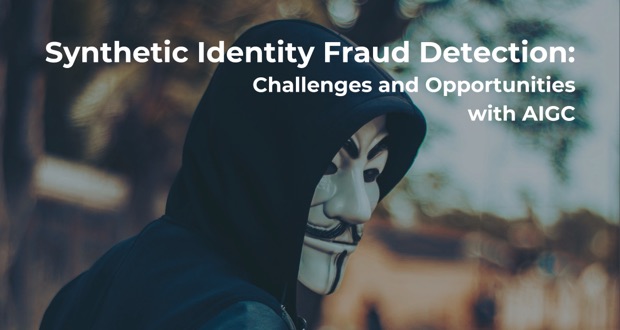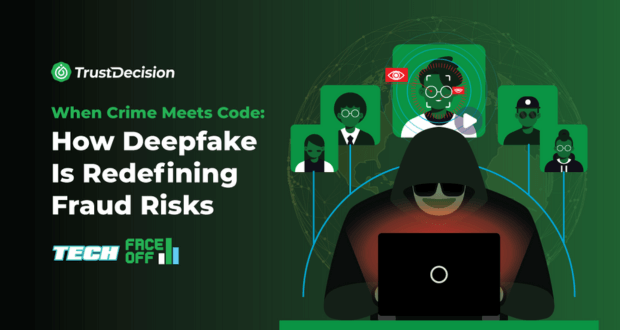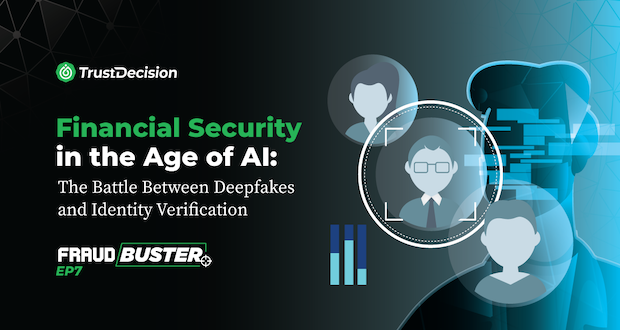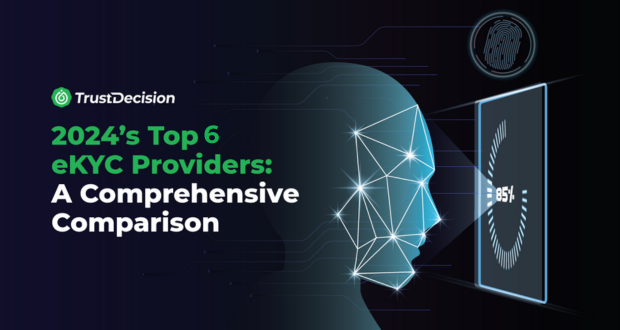Synthetic identity fraud is a pervasive and insidious threat that plagues financial institutions worldwide. Unlike traditional identity theft, where criminals assume an existing identity, synthetic identity fraud involves the creation of entirely new identities—crafted from a blend of real and fabricated information. These synthetic identities are then used to open fraudulent accounts, secure credit, and perpetrate financial crimes.
The urgency to combat synthetic identity fraud cannot be overstated. As financial institutions grapple with mounting losses and regulatory pressures, innovative solutions are imperative. AI-powered fraud detection software holds the key to identifying these elusive constructs swiftly and accurately.
Understanding Synthetic Identity Fraud
Synthetic identity fraud is a sophisticated and evolving form of financial deception that blends real and fabricated information to create fictitious identities. Unlike traditional identity theft, which involves stealing an individual's complete identity—such as their Social Security number, name, and address—synthetic identity fraud involves constructing entirely new personas. Fraudsters meticulously craft these synthetic identities by combining elements from multiple sources, such as a valid Social Security number paired with a fictional name. This method allows them to evade detection by appearing as legitimate credit applicants, thereby bypassing traditional detection mechanisms.
Understanding the nuances of synthetic identity fraud is crucial as it presents unique challenges compared to traditional identity theft, where perpetrators assume an existing identity to commit fraud.
The Impact on Financial Institutions
Financial institutions are significantly impacted by synthetic identity fraud, facing not only financial losses but also broader repercussions that can undermine their operations and reputation. Here’s how they are affected:
- Losses and Liabilities:
- Synthetic identity fraud leads to substantial financial losses for banks, credit card companies, and lenders. These institutions are often left to absorb the costs associated with unpaid loans, charge-offs, and write-offs. As fraudsters use fabricated identities to gain access to credit or loans, the financial burden of these unpaid debts falls on the institutions, which can accumulate into significant amounts.
- Erosion of Trust:
- The presence of synthetic identities within the financial system can lead to an erosion of trust among consumers. As institutions tighten security measures to combat fraud, legitimate customers often experience inconveniences such as increased scrutiny, delays in service, and false positives from fraud detection systems. This heightened security can frustrate customers, potentially leading to dissatisfaction and loss of business.
- Regulatory Scrutiny:
- Financial institutions are under constant scrutiny from regulators who demand robust measures to prevent fraud. Failure to effectively detect and mitigate synthetic identity fraud can result in penalties and serious reputational damage. Regulatory bodies expect institutions to have advanced fraud detection and prevention systems in place; failing to meet these expectations can lead to fines, sanctions, and a tarnished reputation in the financial community.
Overall, synthetic identity fraud not only imposes direct financial losses on financial institutions but also challenges them in maintaining customer trust and regulatory compliance, highlighting the need for advanced, effective solutions to mitigate this growing threat.
Challenges in Detection
Detecting synthetic identity fraud presents several intricate challenges for financial institutions and fraud prevention teams. Let’s explore these hurdles:
- Layered Composition:
- Synthetic identities are meticulously crafted by layering real and fake information. This complexity makes it difficult to distinguish between legitimate and fraudulent profiles.
- Traditional fraud detection methods often struggle to unravel these intricate compositions.
- Evading Verification Protocols:
- Fraudsters exploit weaknesses in verification processes. Synthetic identities may pass initial checks because they contain genuine components (such as valid Social Security numbers).
- However, deeper scrutiny reveals inconsistencies, as these identities lack a complete match with official records.
- Dynamic Evolution:
- Synthetic identity fraud evolves rapidly. Fraudsters adapt their techniques to bypass detection systems.
- Static rule-based models struggle to keep up with these dynamic changes.
- Use of Unmonitored Social Security Numbers:
- Fraudsters often use dormant or unmonitored Social Security numbers. These numbers belong to individuals who may not actively use credit or financial services.
- By attaching these numbers to synthetic identities, fraudsters avoid immediate detection.
- Shell Companies and Credit Building:
- Fraudsters create shell companies or fictitious businesses to build credit for synthetic identities. These entities engage in transactions, establish credit history, and manipulate credit scores.
- Detecting these subtle patterns requires sophisticated analytics and collaboration across institutions.
To address these challenges, financial organizations are increasingly turning to AI-driven fraud detection software. These advanced systems analyze vast datasets, detect anomalies, and adapt to evolving fraud techniques. Additionally, collaboration among industry stakeholders and the adoption of behavioral biometrics enhance the fight against synthetic identity fraud.
Mitigation Strategies
To effectively combat the rising threat of synthetic identity fraud, financial institutions and organizations must adopt robust mitigation strategies. Let’s delve into these essential approaches:
- Multi-Layered Authentication:
- Balancing security and user experience is crucial. Implementing multi-layered authentication ensures stringent access controls without causing inconvenience to legitimate users.
- By combining factors such as passwords, biometrics (including fingerprint recognition, facial recognition, and voice authentication), and device recognition, organizations create a formidable defense against synthetic identity attacks.
- Biometrics Excellence:
- Leveraging cutting-edge biometric technology provides robust user verification.
- Fingerprint Recognition: Unique fingerprint patterns serve as irreplaceable identifiers.
- Facial Recognition: Analyzing facial features ensures accurate user verification.
- Voice Authentication: Voiceprints add an additional layer of security.
- Integrating these biometric techniques enhances fraud prevention efforts.
- Collaboration Across Institutions:
- Recognizing that no single entity can tackle synthetic identity fraud alone, organizations actively collaborate with other stakeholders, including banks, credit bureaus, law enforcement agencies, and technology providers.
- Sharing insights, threat intelligence, and best practices helps identify emerging patterns and stay ahead of fraudsters.
- Industry-Wide Fraud Prevention:
- Organizations play a pivotal role in industry-wide fraud prevention.
- By fostering digital inclusion and working closely with government bodies, regulators, educators, and local associations, organizations ensure a safer digital future for individuals and businesses alike.
Technologies Driving Detection
In the ongoing battle against synthetic identity fraud, cutting-edge technologies play a pivotal role. Let’s delve into the key technologies driving detection and prevention:
- AI Fraud Detection Software:
- Artificial Intelligence (AI) is revolutionizing fraud detection. AI-powered tools analyze vast datasets, identify patterns, and adapt to evolving tactics.
- Neural Networks and Deep Learning: These models learn from historical data, detecting anomalies and uncovering subtle fraud indicators.
- Natural Language Processing (NLP): NLP algorithms process unstructured text data, such as social media posts or chat logs, to identify suspicious behavior.
- Case Studies: In a recent case study by DeDomena AI, researchers explored the effectiveness of AI in detecting synthetic identities. By meticulously analyzing transaction histories, behavioral patterns, and credit applications, their AI system successfully identified fraudulent synthetic identities. This groundbreaking approach resulted in an impressive 19% increase in fraud detection accuracy compared to traditional methods. The utilization of synthetic data allowed the AI model to generalize better and adapt to previously unseen fraud patterns. This statistical improvement demonstrates the tangible benefits of integrating AI into fraud prevention strategies.
- Data Fusion and Integration:
- Combining diverse data sources enhances accuracy. Organizations fuse data from credit bureaus, social media, public records, and transaction histories.
- Machine Learning Algorithms: These algorithms integrate and harmonize data, creating a comprehensive view of an individual’s financial behavior.
- Real-Time Monitoring: Continuous data fusion ensures timely detection of anomalies.
- Blockchain and Decentralized Identity:
- Blockchain: Its decentralized, tamper-proof nature holds promise for secure identity management.
- Decentralized Identity (DID): DID systems allow users to control their identity data without relying on central authorities.
- Immutable Records: Blockchain ensures that once an identity record is established, it cannot be altered, reducing the risk of synthetic identity creation.
- TrustDecision’s KYC++: A Comprehensive Security Framework
- Biometrics Authentication (Liveness Detection & Face Comparison):
- Authenticate live individuals by comparing their facial features with KYC documents.
- Mitigate spoofing and impersonation attempts by reducing manual verification.
- Document Verification (Optical Character Recognition - OCR):
- Efficiently capture, assess, extract, and verify data from KYC documents.
- Achieve fast and accurate onboarding while ensuring compliance.
- Device Check (Device Fingerprint):
- Identify unique device IDs to strengthen fraud protection.
- Detect anomalies, prevent unauthorized access, and mitigate risks associated with AI-Generated Content (AIGC).
Future Outlook
As we peer into the future, several critical aspects shape the landscape of synthetic identity fraud detection and prevention. Let’s explore what lies ahead:
- Advancements in AIGC:
- Ongoing Research and Development: Researchers and practitioners continually refine AIGC algorithms and techniques. Expect breakthroughs in neural networks, deep learning, and natural language processing.
- Behavioral Biometrics: AIGC-driven behavioral analysis, including keystroke dynamics, mouse movements, and device usage, will enhance fraud detection.
- Explainable AIGC: Efforts to make AIGC models more transparent and interpretable will gain momentum, allowing better understanding of fraud detection decisions.
- Regulatory Landscape:
- Compliance Challenges: Striking a balance between robust fraud prevention and customer experience remains a challenge. Regulations must evolve to accommodate innovative solutions while safeguarding privacy.
- Evolving Standards: Regulatory bodies will adapt to emerging threats. Expect guidelines specific to synthetic identity fraud detection and reporting.
- Global Cooperation: Cross-border collaboration will be crucial. Harmonizing regulations ensures consistent protection across jurisdictions.
- Closing Remarks:
- Innovation and Collaboration: Encourage organizations, technology providers, and regulators to collaborate. Sharing insights, best practices, and threat intelligence strengthens the collective defense against synthetic identity fraud.
- Education and Awareness: Educate consumers, businesses, and employees about synthetic identity risks. Awareness empowers proactive prevention.
- Stay Ahead: As fraudsters evolve, so must our defenses. Embrace innovation, invest in research, and adapt swiftly.









.jpeg)




